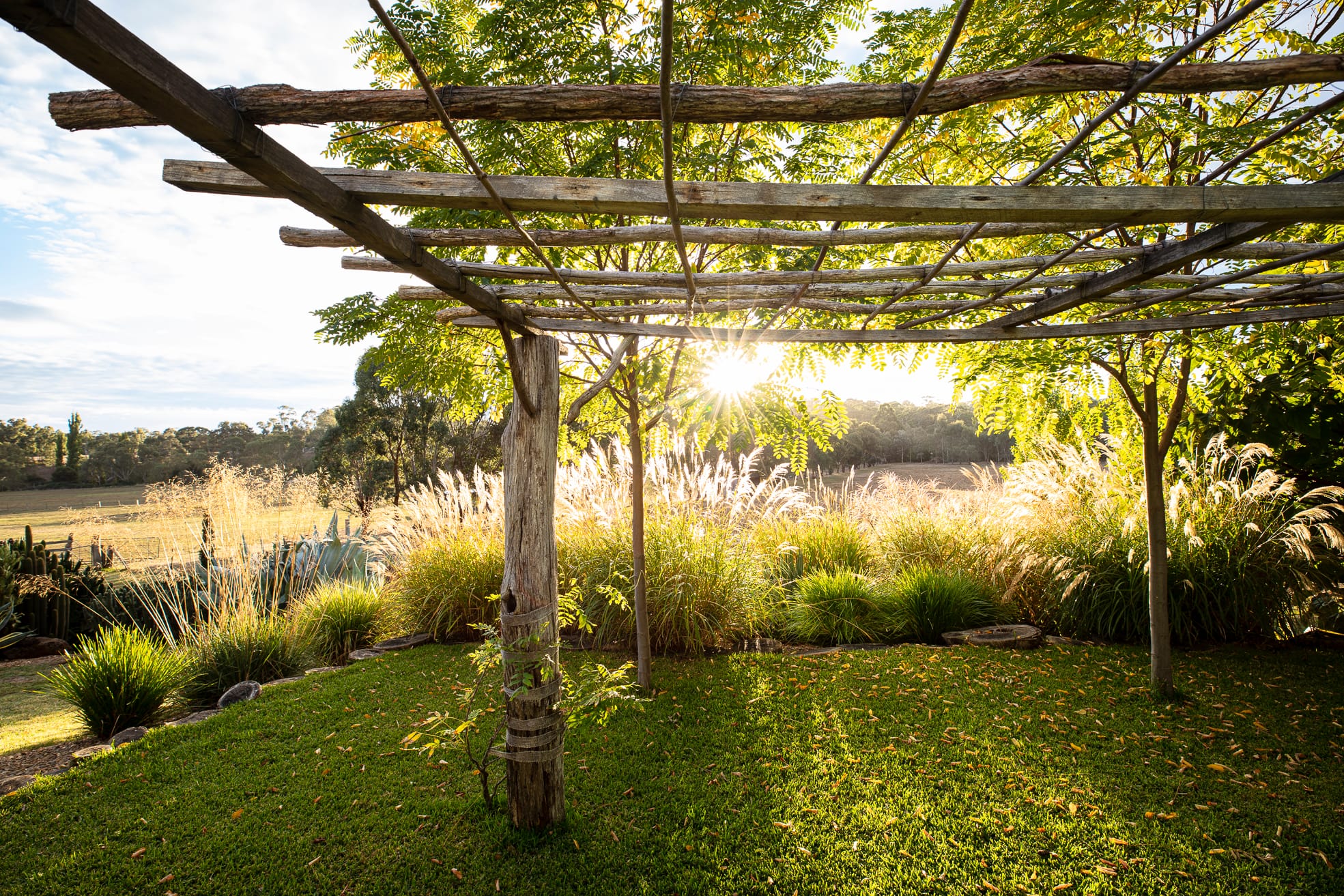
Gardening in a drought-prone place of temperature extremes is not for the faint-hearted, but Jeremy Valentine loves a challenge. Here’s the latest instalment of In the Weeds, his monthly newsletter for Galah.

March is the driest month here at The Stones. We're at a precarious point with the garden now, which is languishing and as dry as a chip. Everything is desperately crying out for that first break – usually in April, when (fingers crossed) significant rains arrive.
It can never come soon enough, and this year is no exception. It's been an extremely harsh and dry year indeed.
When the rain finally does arrive, there's a cornucopia of growth just ready and waiting for this trigger of jubilant vitality. It's the butterfly effect in the chaos theory of a garden awaiting its cue from an intangible master plan.
Until then what lies before me is a dusty shambles of leaves frizzled with sunburn, and the lolloping stems of perennials that in other gardens (in more gracious climes) are picture-book perfect.
Even some of the stressed trees are on the turn earlier than their internal clocks have scheduled, and are considering putting themselves to bed in an impromptu blush of colour. They, like us, are sick of the thirsty, endless heat, and the desperately empty skies.
Some things, however, triumphantly forge on, regardless. The second round of Echinops 'Ritro Blue' is coming back with gusto, and the euphorbia are bullet-proof and magnificent.
It's times like these that I wonder why we don't just ditch all the delicate sooks and stick with the stalwart heroes instead. But, of course, what takes a gardener's fancy is sometimes worth a shot, even if the plant-to-climate match is less than perfect.
A garden, after all, is an incubator of risks and experiments. Learning from garden failures is how you truly find your place in the mysterious melody of the landscape.
And on that note, may I present my top 10 garden heroes. These unfaltering plants can withstand pretty much everything our harsh climate can dish out. Without them, the garden would be a much emptier place, especially in the hot and dry summer months.
Even though I always declare that I see the beauty in every season, I am happy to turn my back on summer and welcome with open arms the mellow kindness that autumn brings.
Wonderful in colour against sun-bleached lawns and equally lovely lost in heavy mist over winter. Their gnarled trunks give the garden a tortured romance. The olives themselves are, of course, the real bounty, and they are delicious – delicious also to the rosellas that nibble quietly at them through the autumn.
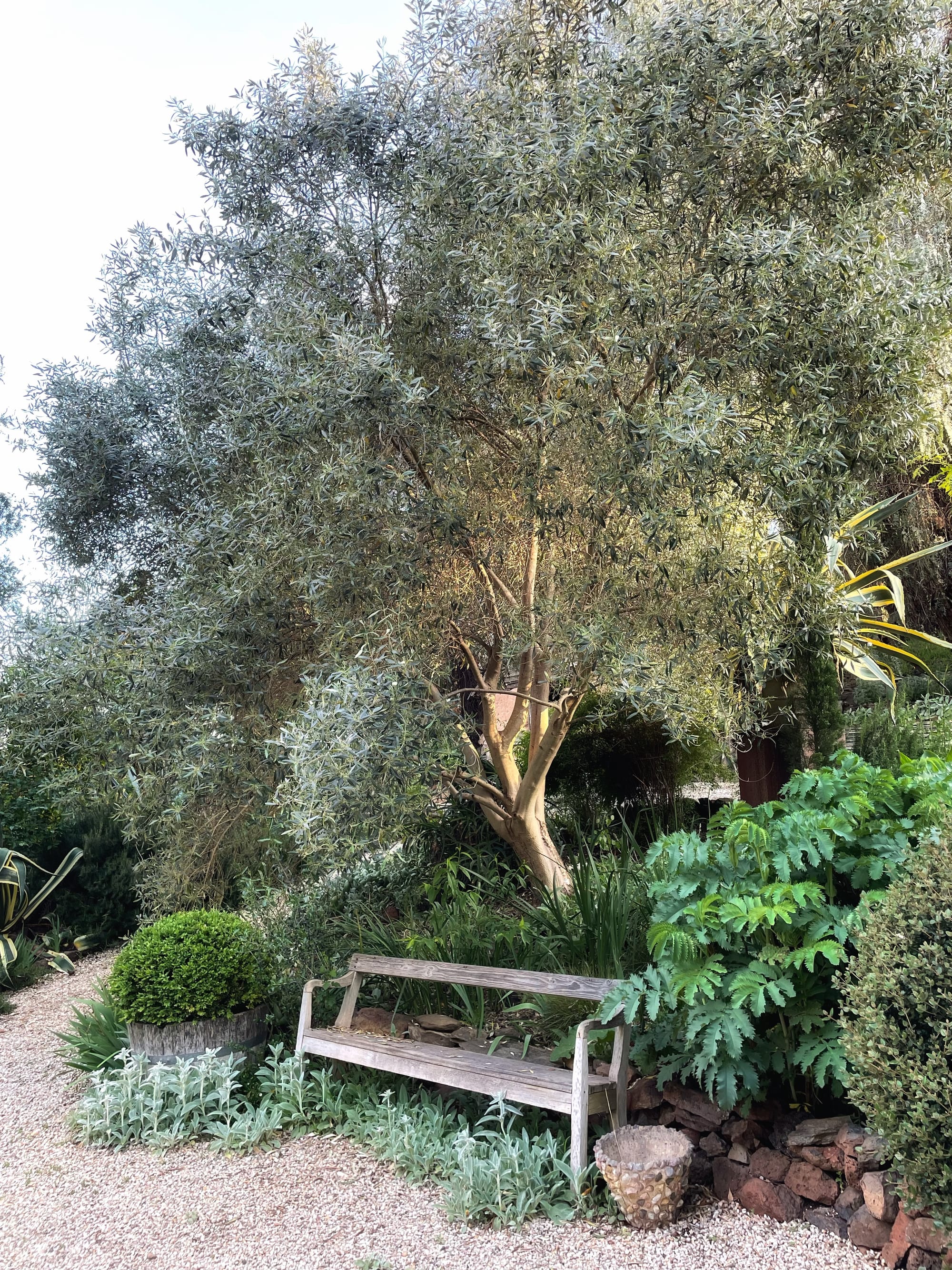
Completely stoic through every adversity. Not only are its noble spikes a shade of green like no other, its aromatic presence in the garden is a sensory gift. Beware, though – don't be seduced by ‘Tuscan Blue’; it’s prone to sudden die-back and, once leggy, is unruly and ultimately disappointing.
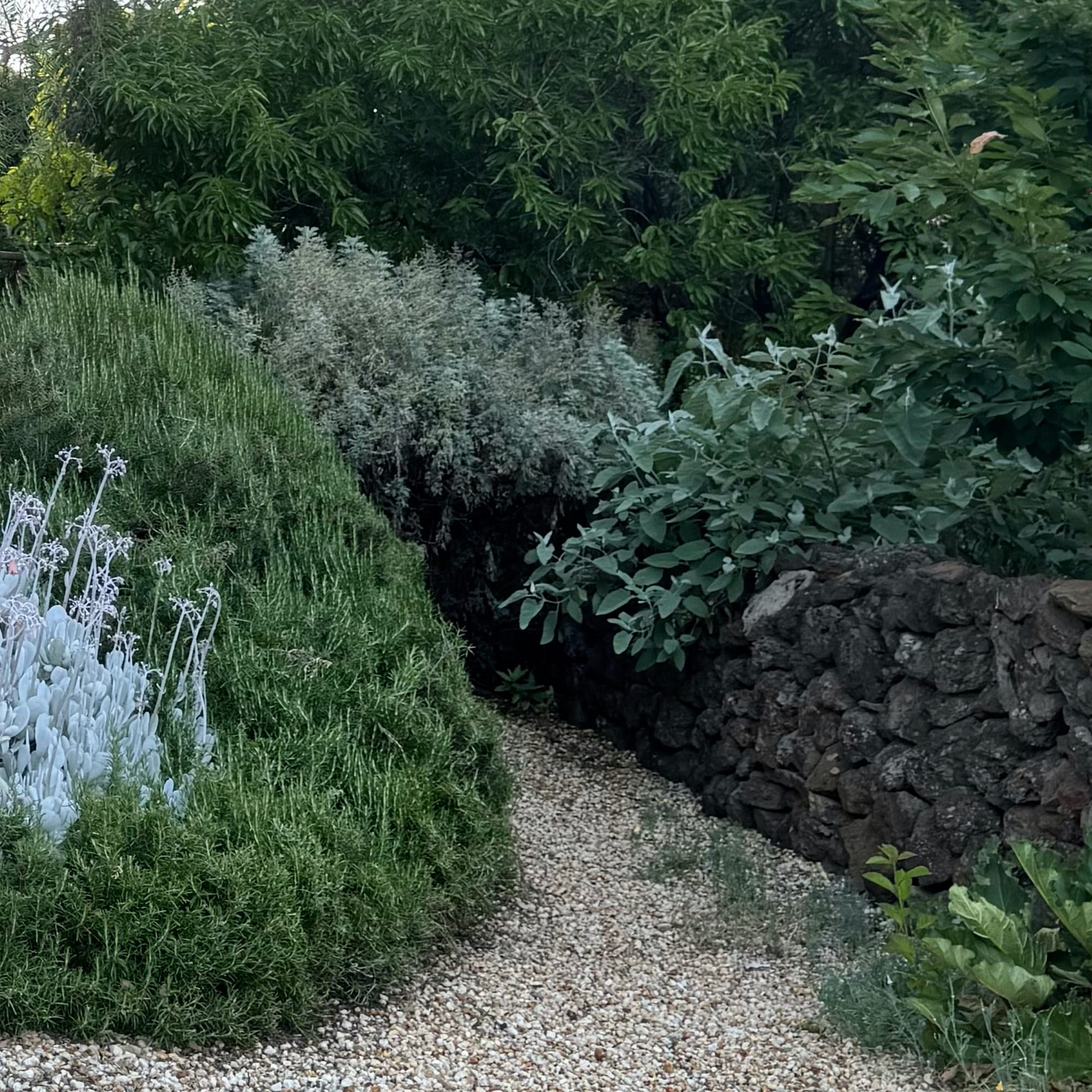
Apart from being timid of heavy frost, this drought-tolerant essential is wonderfully architectural and very dependable. Its robust and rubbery leaves are anchoring, especially the grey-leaved variety ‘Silver Dust’, which is “high fashion” alongside its flower spikes decorated with shy salmon bells.
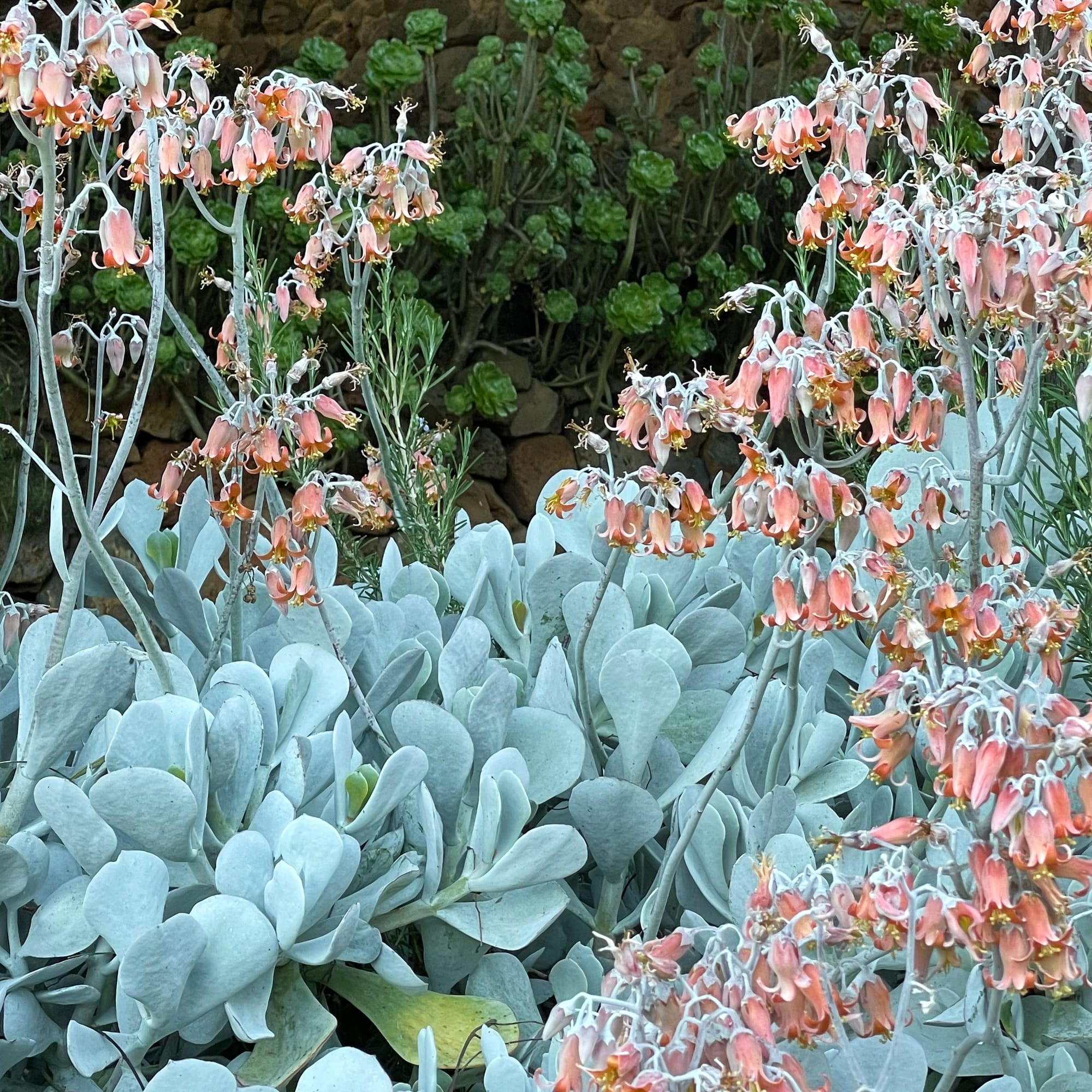
These two varieties, among other euphorbia (although not all), work especially well here in central Victoria. They are very tough and give our garden year-round interest. There’s nothing more compelling than E. rigida's vivid chartreuse blooms during spring, then watching it fade to an intangible pink by summer’s end. It's a little like watching a sunset in slow motion.
E. robbiae is a newly discovered variety for us, perfect for all that dry shade I talked about in the last newsletter. It creates an excellent groundcover, and has leaves the colour of beautiful bottles.
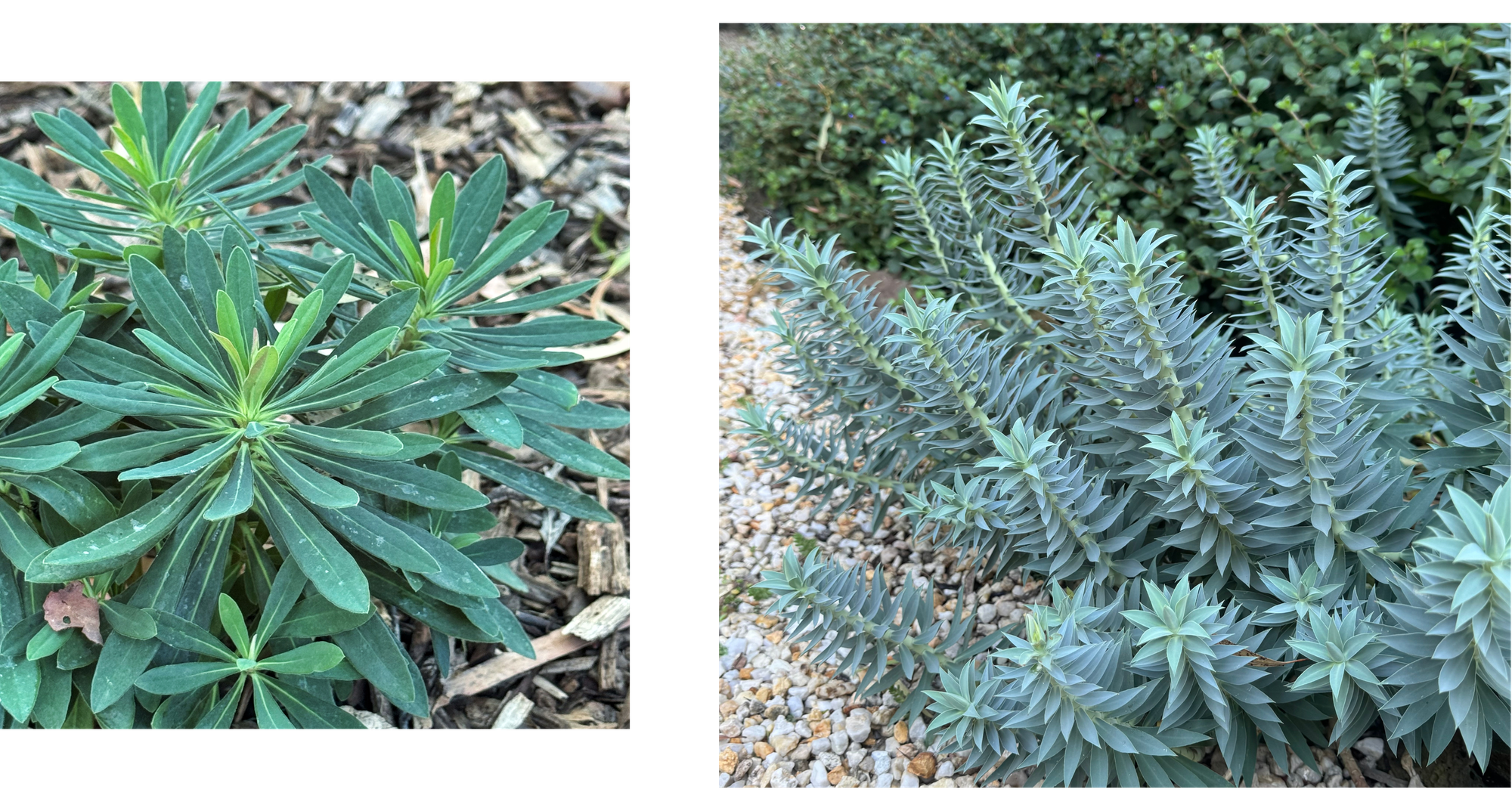
A garden triumph. Every stage of its growth is attractive. It’s a metamorphosis that begins with compact mounds of foliage, then pale green flower spikes blushing to pink, then intensifying to burgundy, then finally rust. During winter the dead flowers and stems are just as invaluable, giving the bare bones of the garden added interest.
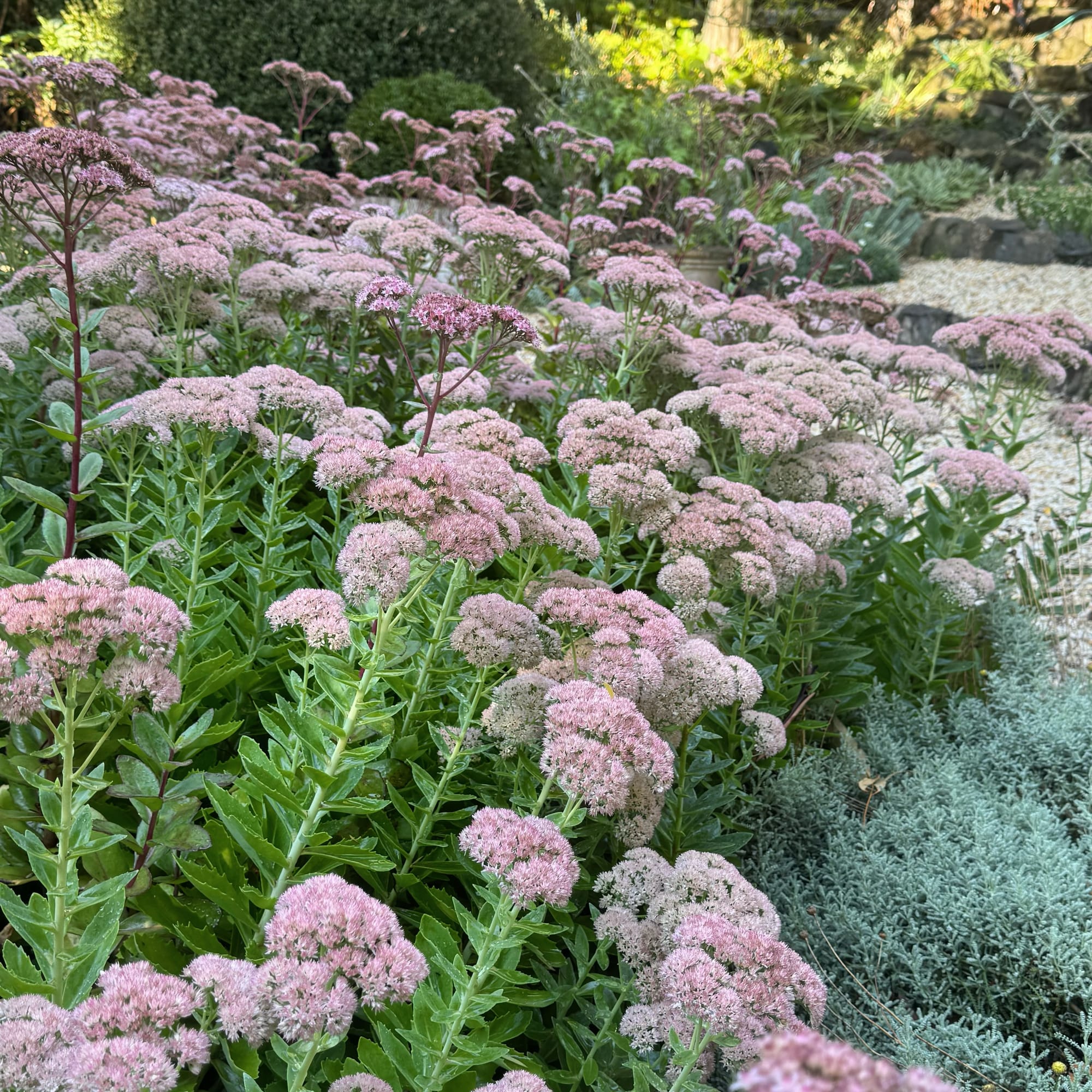
Aromatic and romantic. A traditional beauty with strong sensory and emotional responses. Clipped into somnolent pillows, it’s neither too clever nor too contrived. A great performer in every season.
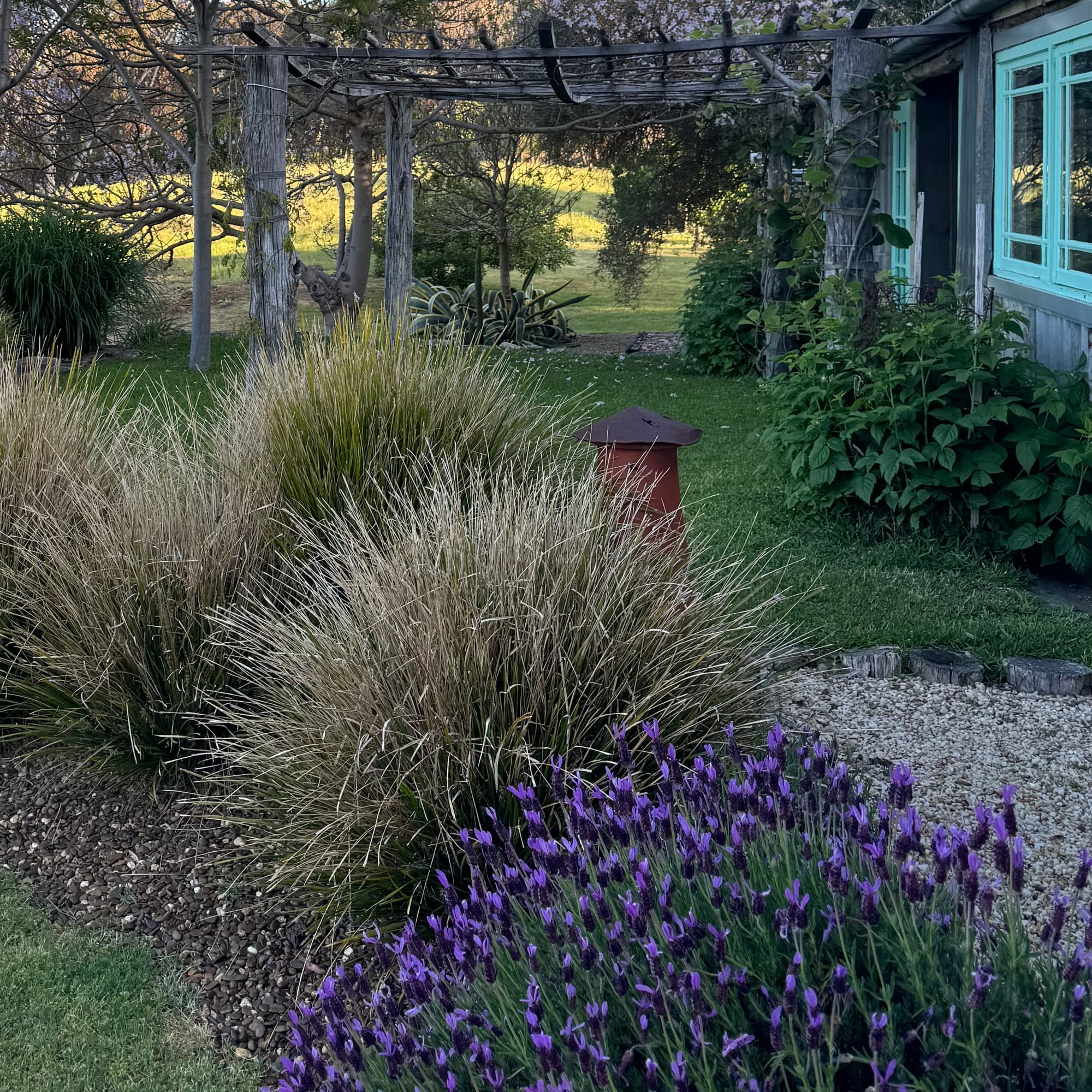
Great for clipping into shapes. Like many things here at The Stones, it sulks for a couple of years at first, but once established it’s tough and reliable. It never mithers for water, and its dull, soft, grey-green leaves are quiet on the eye. Unclipped, I've always felt that it gives a sense of distance and depth to the garden.
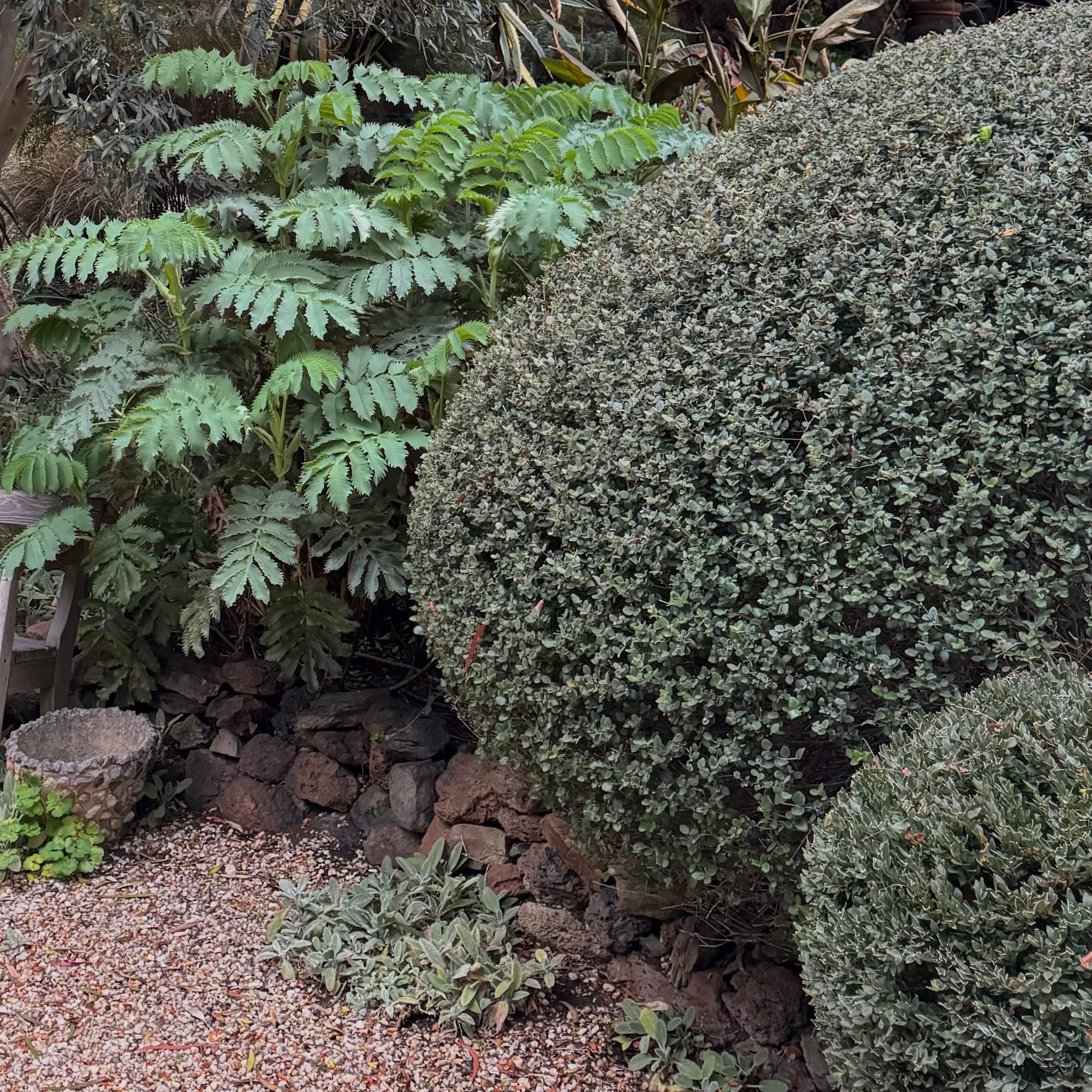
Similar to the correa. It, too, takes time to establish but once it does it’s a low-maintenance marvel (apart from three or four clips a year). Blue flowers among the foliage are unassumingly pretty. It also makes sought-after homes for the fairy wrens that build their nests in the thicket.
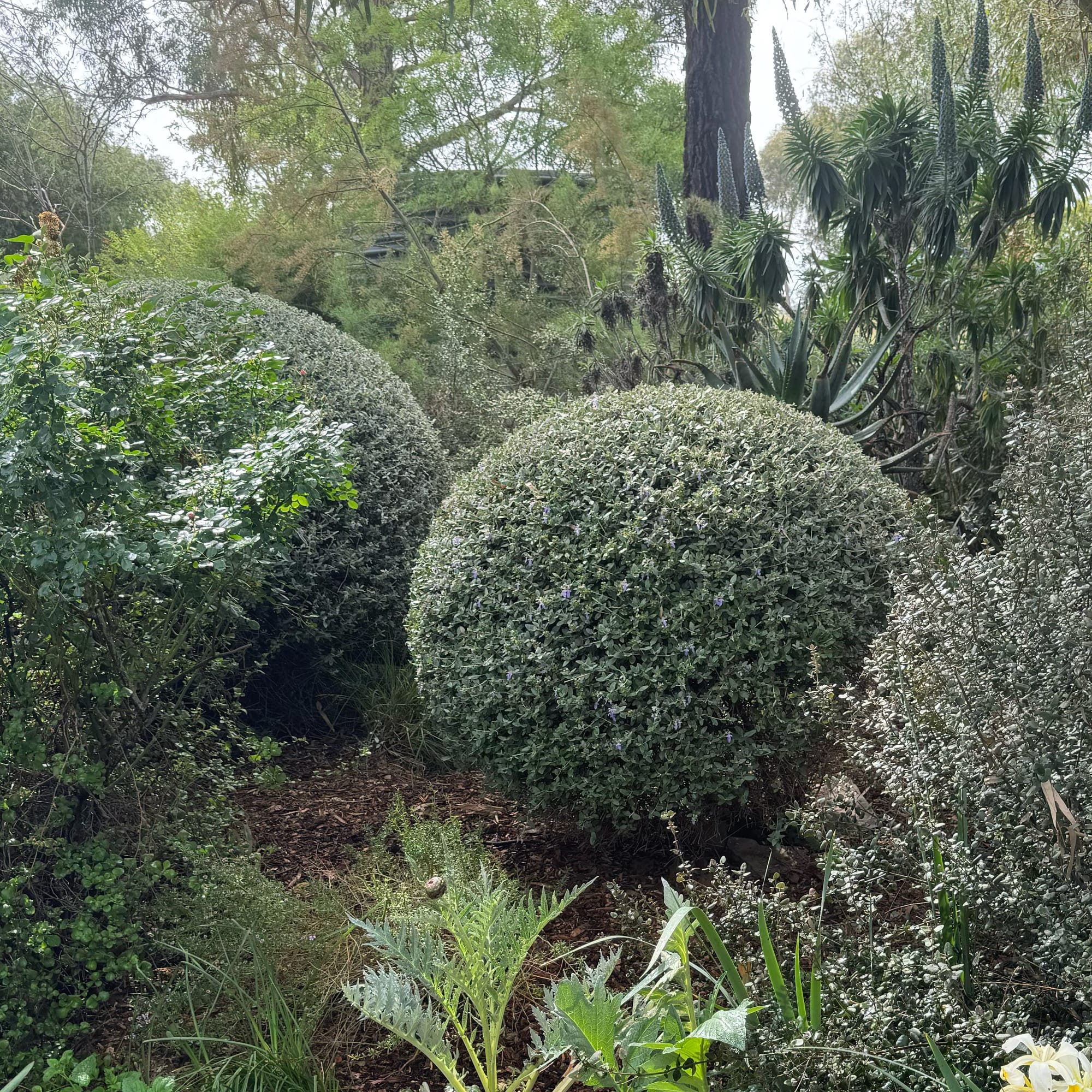
A widely used variety of ornamental grass here at The Stones. It’s naturally dramatic yet somehow never looks too ostentatious. Peering through its tasselled inflorescences to the paddocks beyond is always memorable. It meshes the garden to the greater landscape effortlessly.
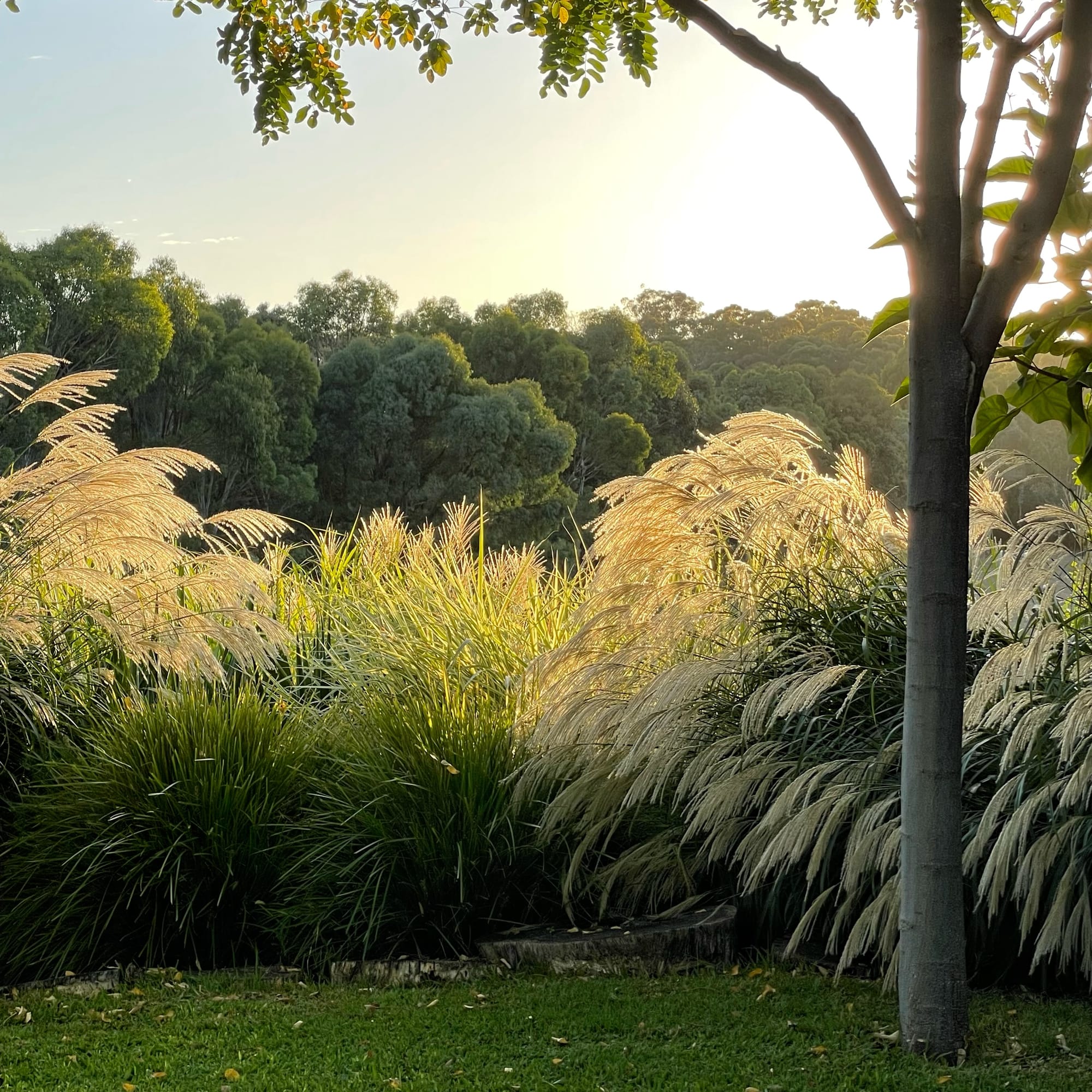
Its perfect blue orb-shaped flowers add a geometry to the garden when everything else has grown to exhausted leggy wisps. It looks stylish leaning against stone walls, and its long jagged arcs of foliage are just as interesting as the flowers.
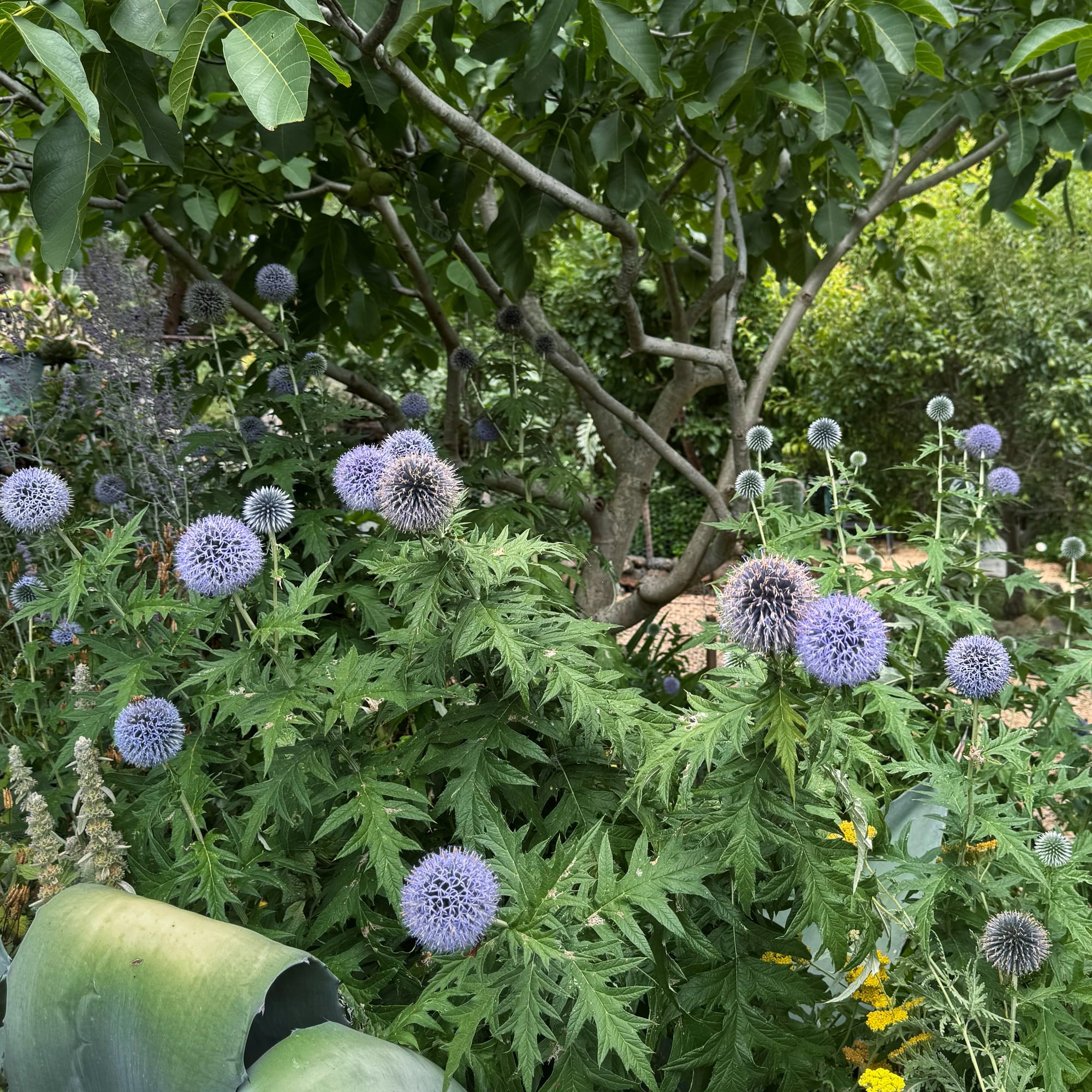
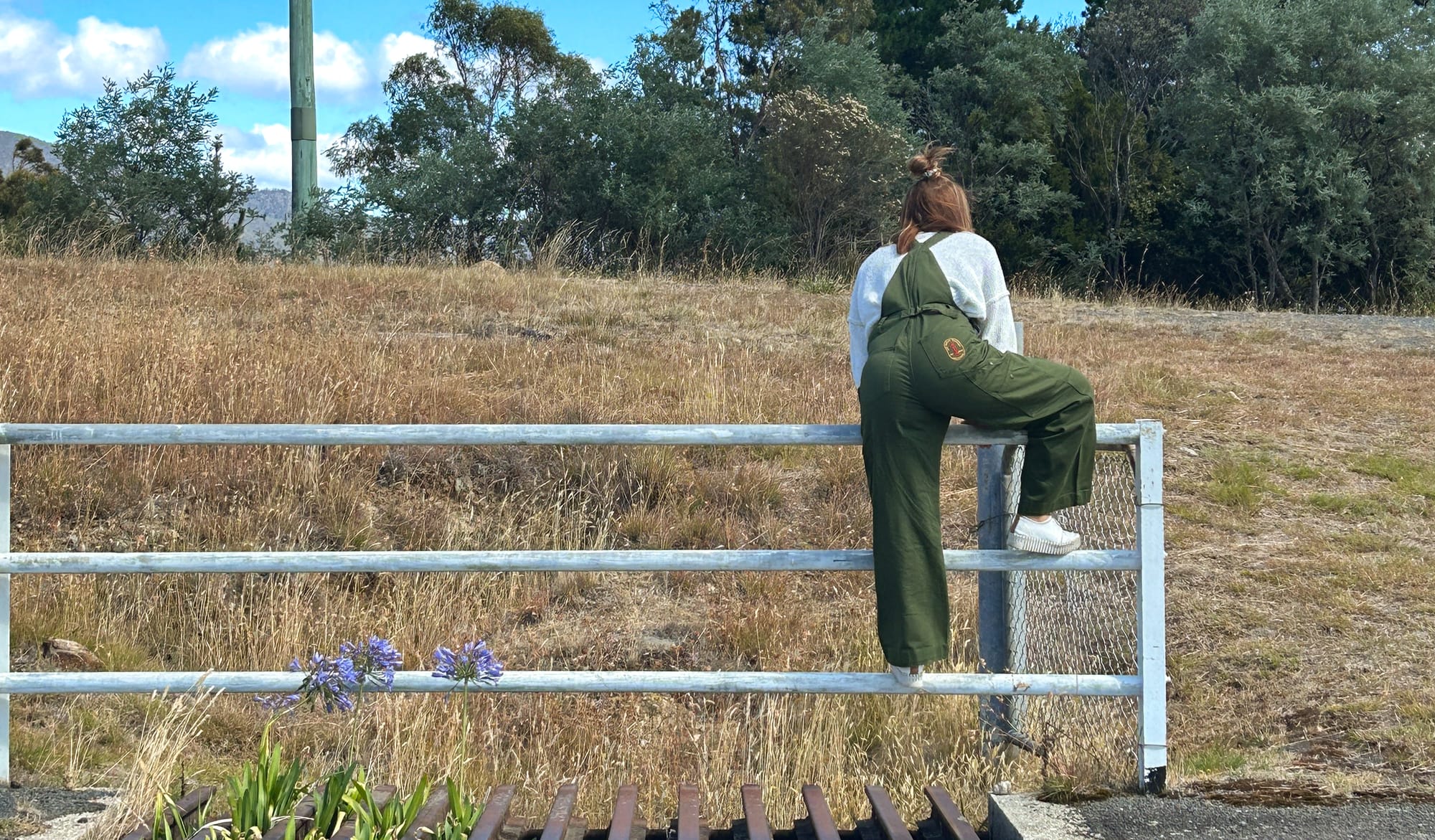
Tougher than your morning rush – SÜK makes workwear that works as hard as you do – durable, functional, and made to move. No fuss, no frills, just damn good gear. Ready to suit up? Shop now.
Catch up on Jeremy's previous stories here or find him on Instagram at @thestonescentralvictoria